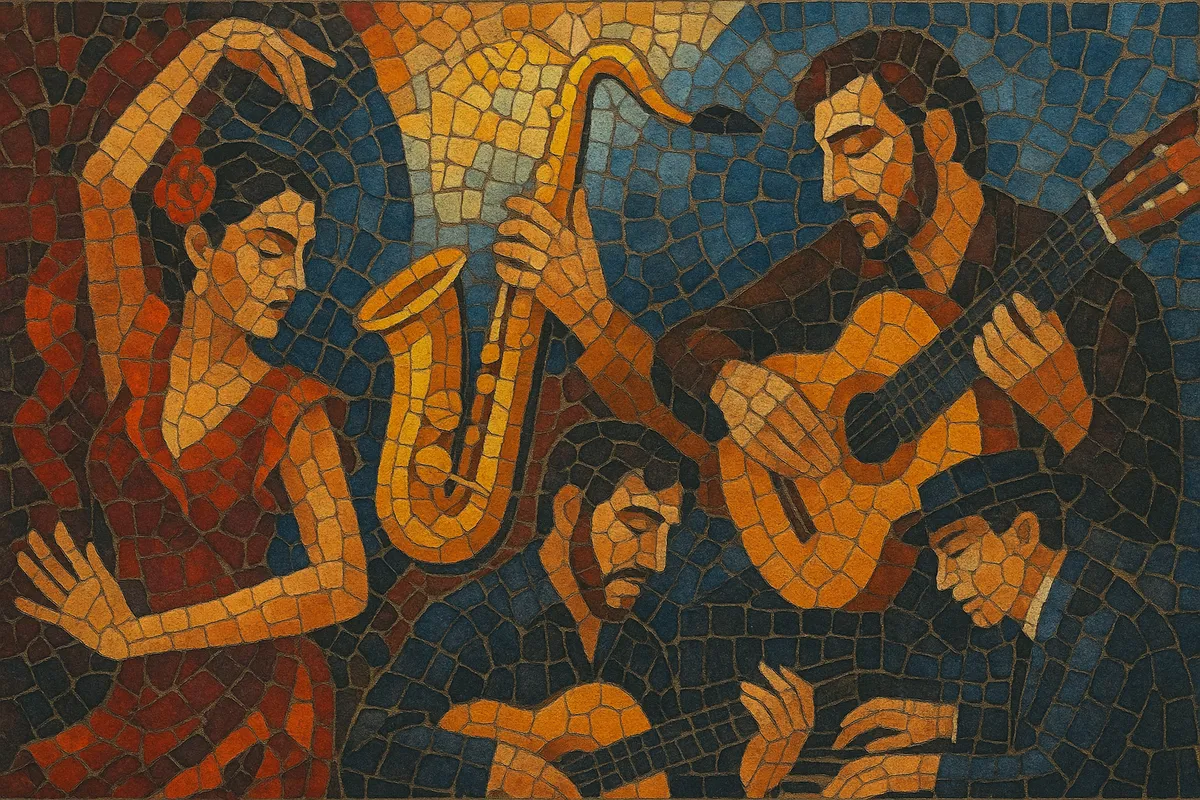Flamenco jazz is a fusion style that blends the rhythmic cycles, guitar techniques, and vocal melismas of flamenco with the harmony, improvisation, and ensemble language of modern jazz.
It typically features flamenco guitar (rasgueado, picado, alzapúa), palmas (handclaps), and cajón alongside piano, saxophone, bass, and drum set. Harmonically it mixes the Phrygian/Phrygian-dominant colors and Andalusian cadence of flamenco with jazz extensions, reharmonization, and modal or bebop-derived lines. The result ranges from driving bulerías and tangos in 4/4 or 12-beat compás to spacious, lyrical soleá-inspired pieces with jazz counterpoint and solo choruses.
Spanish musicians began integrating jazz language into flamenco forms in the 1960s. A landmark is Pedro Iturralde’s “Jazz Flamenco” (1967), which paired saxophone-led jazz combos with flamenco guitar and palmas, proving that compás-based forms could host modern jazz harmony and improvisation.
In the 1970s and 1980s, Paco de Lucía expanded the guitar’s harmonic palette and ensemble concept by adding electric bass, flute/sax, and later cajón (introduced to flamenco ensembles after his encounters with Afro-Peruvian percussion, popularized with Rubem Dantas). Collaborations with jazz virtuosos—most famously the acoustic guitar trios with John McLaughlin and Al Di Meola (“Friday Night in San Francisco,” 1981)—brought international attention to a flamenco–jazz dialogue. Jorge Pardo (sax/flute) and Carles Benavent (bass) were pivotal in translating compás to jazz instruments.
The style matured through artists such as Tomatito (notably with jazz pianist Michel Camilo), Gerardo Núñez, and Niño Josele, who brought a modern harmonic sensibility to traditional palos. Pianist Chano Domínguez reframed jazz repertoire through flamenco rhythm and phrasing, helping establish a piano-centric branch of the idiom.
Pianists (Dorantes, Diego Amador), harmonicists (Antonio Serrano), and new-generation guitarists have continued to refine the balance between compás integrity and jazz improvisation. The genre now spans intimate chamber-like projects to full-band settings that sit comfortably in both jazz and flamenco festivals, influencing nuevo flamenco, nu jazz, and broader world-fusion practices.


